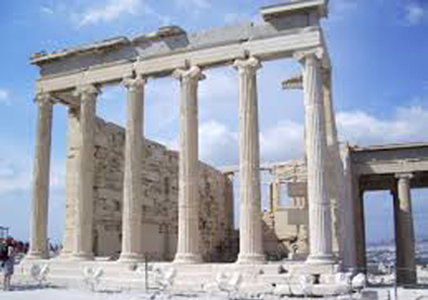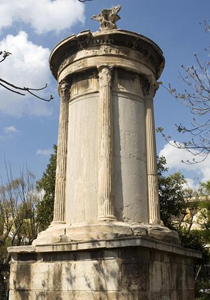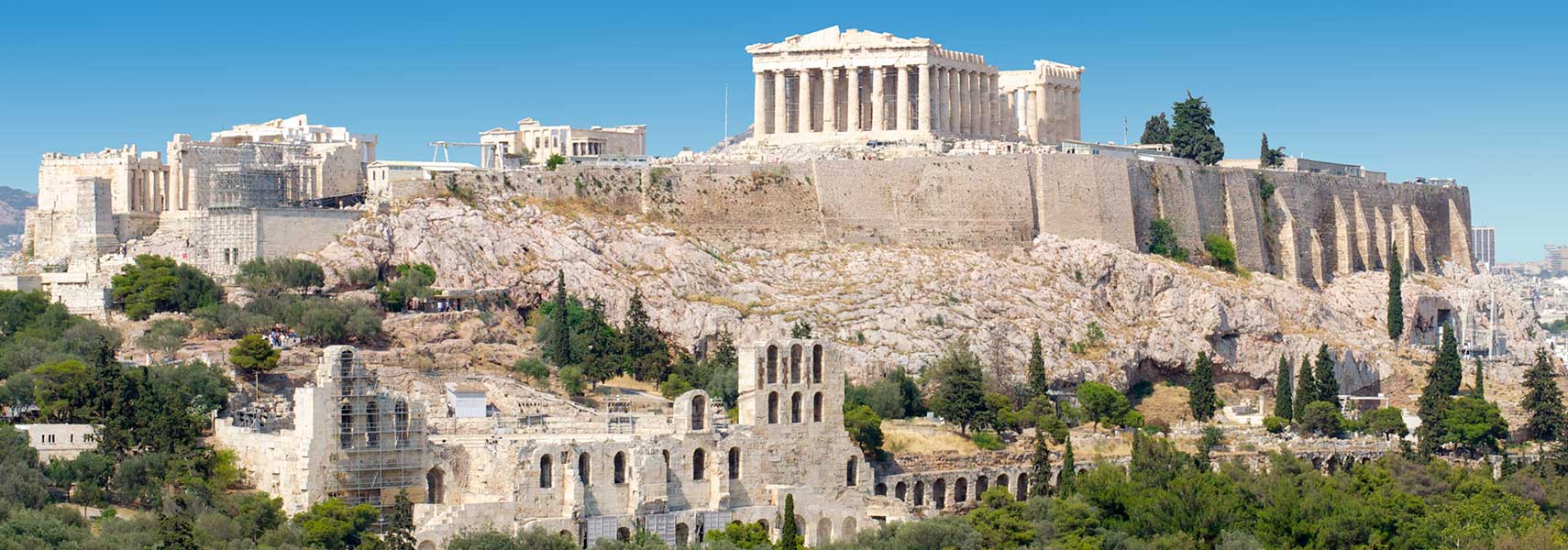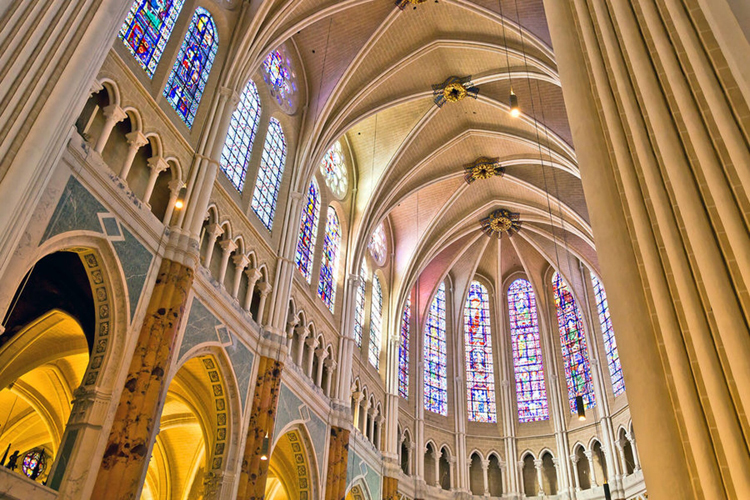Printed in the Summer 2022 issue of Quest magazine.
Citation: Bragdon, Claude, "The Art of Architecture" Quest 110:3, pg 14-21
By Claude Bragdon
 One of the advantages of a thorough assimilation of what may be called the theosophic idea is that it can be applied with advantage to every department of knowledge and of human activity: like the key to a cryptogram, it renders clear and simple that which before seemed intricate and obscure. Let us apply this key to the subject of art, and to the art of architecture in particular, and see if by so doing we may not learn more of art than we knew before, and more of theosophy too.
One of the advantages of a thorough assimilation of what may be called the theosophic idea is that it can be applied with advantage to every department of knowledge and of human activity: like the key to a cryptogram, it renders clear and simple that which before seemed intricate and obscure. Let us apply this key to the subject of art, and to the art of architecture in particular, and see if by so doing we may not learn more of art than we knew before, and more of theosophy too.
The theosophic idea is that everything is an expression of the Self—or whatever other name one may choose to give to that immanent unknown reality which forever hides behind all phenomenal life—but because, immersed as we are in materiality, our chief avenue of knowledge is sense perception, a more exact expression of the theosophic idea would be: everything is the expression of the Self in terms of sense. Art, accordingly, is the expression of the Self in terms of sense. Now though the Self is one, sense is not one, but manifold: and therefore there are arts, each addressed to some particular faculty or group of faculties, and each expressing some particular quality or group of qualities of the Self. The white light of Truth is thus broken up into a rainbow-tinted spectrum of Beauty, in which the various arts are colors, each distinct, yet merging one into another—poetry into music; painting into decoration; decoration becoming sculpture; sculpture, architecture; and so on.
| p |  |
| Claude Bragdon's blueprint design for the entrance arch to the Theosophical Society's Olcott headquarters, dedicated in 1940. Image by courtesy ofJanet Kerschner, TSA archives. |
In such a spectrum of the arts, each one occupies a definite place, and all together form a series of which music and architecture are the two extremes. That such is their relative position may be demonstrated in various ways. The theosophic explanation involving the familiar idea of the “pairs of opposites” would be something as follows. According to the Hindu-Aryan theory, Brahma, that the world might be born, fell asunder into man and wife, became, in other words, name and form.*
The two universal aspects of name and form are what philosophers call the two “modes of consciousness,” one of time, and the other of space. These are the two gates through which ideas enter phenomenal life; the two boxes, as it were, that contain all the toys with which we play.
Everything, were we only keen enough to perceive it, bears the mark of one or the other of them, and may be classified accordingly. In such a classification music is seen to be allied to time, and architecture to space, because music is successive in its mode of manifestation, and in time alone everything would occur successively, one thing following another; while architecture, on the other hand, impresses itself upon the beholder all at once, and in space alone all things would exist simultaneously.
Music, which is in time alone, without any relation to space, and architecture, which is in space alone, without any relation to time, are thus seen to stand at opposite ends of the art spectrum, and to be, in a sense, the only “pure” arts, because in all the others the elements of both time and space enter in varying proportion, either actually or by implication. Poetry and the drama are allied to music inasmuch as the ideas and images of which they are made up are presented successively, yet these images are for the most part forms of space. Sculpture on the other hand is clearly allied to architecture, and so to space, but the element of action, suspended though it be, affiliates it with the opposite, or time pole. Painting occupies a middle position, since in it space, instead of being actual, has become ideal—three dimensions being expressed through the mediumship of two—and time enters into it more largely than into sculpture by reason of the greater ease with which complicated action can be indicated: a picture being nearly always time arrested in midcourse as it were—a moment transfixed.
In order to form a just conception of the relation between music and architecture, it is necessary that the two should be conceived of not as standing at opposite ends of a series represented by a straight line, but rather in juxtaposition, as in the ancient Egyptian symbol of a serpent holding its tail in its mouth, the head in this case corresponding to music, and the tail to architecture; in other words, though in one sense they are the most widely separated of the arts, in another they are the most closely related.
Music being purely in time and architecture being purely in space, each is, in a manner and to a degree not possible with any of the other arts, convertible into the other, by reason of the correspondence subsisting between intervals of time and intervals of space. A perception of this may have inspired the famous saying that architecture is frozen music, a poetical statement of a philosophical truth, since that which in music is expressed by means of harmonious intervals of time and pitch, successively, after the manner of time, may be translated into corresponding intervals of architectural void and solid height and width.
In another sense music and architecture are allied. They alone of all the arts are purely creative, since in them is presented, not a likeness of some known idea, but a thing-in-itself brought to a distinct and complete expression of its nature. Neither a musical composition nor a work of architecture depends for its effectiveness upon resemblances to natural sounds in the one case, or to natural forms in the other. Of none of the other arts is this to such a degree true: they are not so much creative as re-creative, for in them all the artist takes his subject ready made from nature and presents it anew according to the dictates of his genius.
The characteristic differences between music and architecture are the same as those which subsist between time and space. Now time and space are such abstract ideas that they can be dealt with best through their corresponding correlatives in the natural world, for it is a fundamental theosophic tenet that nature everywhere abounds in such correspondences; that nature, in its myriad forms, is indeed the concrete presentment of abstract unities. The energy which everywhere animates form is a type of time within space; the mind working in and through the body is another expression of the same thing.
Correspondingly, music is dynamic, subjective, mental, of one dimension; while architecture is static, objective, physical, of three dimensions; sustaining the same relation to music and the other arts as does the human body to the various organs, which compose, and consciousnesses, which animate it (it being the reservatory of these organs and the vehicle of these consciousnesses); and a work of architecture in like manner may and sometimes does include all of the other arts within itself. Sculpture accentuates and enriches, painting adorns, works of literature are stored within it, poetry and the drama awake its echoes, while music thrills to its uttermost recesses, like the very spirit of life tingling through the body’s fibers.
Such being the relation between them, the difference in the nature of the ideas bodied forth in music and in architecture becomes apparent.
Music is interior, abstract, subjective, speaking directly to the soul in a simple and universal language whose meaning is made personal and particular in the breast of each listener: “Music alone of all the arts,” says Balzac, “has power to make us live within ourselves.”
A work of architecture is the exact opposite of this: existing principally and primarily for the uses of the body, it is, like the body, a concrete organism, attaining to esthetic expression only in the reconciliation and fulfilment of many conflicting practical requirements. Music is pure beauty, the voice of the unfettered and perpetually vanishing soul of things; architecture is that soul imprisoned in a form, become subject to the law of causality, beaten upon by the elements, at war with gravity, the slave of man. One is the Ariel of the arts; the other, Caliban.
Coming now to the consideration of architecture in its historical rather than its philosophical aspect, it will be shown how certain theosophical concepts are applicable here. Of these none is more familiar and none more fundamental than the idea of reincarnation. By reincarnation more than mere physical rebirth is meant, for physical rebirth is but a single manifestation of that universal law of alternation of state, of animation of vehicles, and progression through related planes, in accordance with which all things move, and as it were make music—each cycle complete, yet part of a larger cycle, the incarnate monad passing through correlated changes, carrying along and bringing into manifestation in each successive arc of the spiral the experience accumulated in all preceding states, and at the same time unfolding that power of the Self peculiar to the plane in which it is momentarily manifesting.
This law finds exemplification in the history of architecture in the orderly flow of the building impulse from one nation and one country to a different nation and a different country: its new vehicle of manifestation; also in the continuity and increasing complexity of the development of that impulse in manifestation; each “incarnation” summarizing all those which have gone before, and adding some new factor peculiar to itself alone; each being a growth, a life, with periods corresponding to childhood, youth, maturity, and decadence; each also typifying in its entirety some single one of these life-periods, and revealing some special aspect or power of the Self.
For the sake of clearness and brevity, the consideration of only one of several architectural evolutions will be attempted: that which, arising in the north of Africa, spread to southern Europe, thence to the northwest of Europe and to England—the architecture, in short, of the so-called civilized world.
This architecture, anterior to the Christian era, may be broadly divided into three great periods, during which it was successively practiced by three peoples: the Egyptians, the Greeks, and the Romans.
Then intervened the Dark Ages, and a new art arose, the Gothic, which was a flowering out in stone of the spirit of Christianity. This was in turn succeeded by the Renaissance, the impulse of which remains today unexhausted. In each of these architectures the peculiar genius of a people and of a period attained to a beautiful, complete, and coherent utterance, and notwithstanding the considerable intervals of time which sometimes separated them, they succeeded one another logically and inevitably, and each was related to the one which preceded and the one which followed it in a particular and intimate manner.
The power and wisdom of ancient Egypt was vested in its priesthood, which was composed of individuals exceptionally qualified by birth and training for their high office, tried by the severest ordeals, and bound by the most solemn oaths. The priests were honored and privileged above all other men, and spent their lives dwelling apart from the multitude in vast and magnificent temples, dedicating themselves to the study and practice of religion, philosophy, science, and art—subjects then intimately related, not widely separated, as they are now. These men were the architects of ancient Egypt: theirs the minds which directed the hands that built those time-defying monuments.
The rites that the priests practiced centered about what are known as the Lesser and the Greater Mysteries. These consisted of representations, by means of symbol and allegory, under conditions and amid surroundings the most awe-inspiring, of those great truths concerning man’s nature, origin, and destiny of which the priests—in reality a brotherhood of initiates and their pupils—were the custodians. These ceremonies were made the occasion for the initiation of neophytes into the order, and the advancement of the already initiated into its successive degrees. For the practice of such rites, and others designed to impress not the elect but the multitude, the great temples of Egypt were constructed. Everything about them was calculated to induce a deep seriousness of mind, and to inspire feelings of awe, dread, and even terror, so as to test the candidate’s fortitude of soul to the utmost.
 |
|
| FIGURE 1. Avenue of the Sphinxes, connecting the temples of Karnak and Luor, Egypt. Completed 380-62 BC. |
The avenue of approach to an Egyptian temple was flanked on both sides, sometimes for a mile or more, with great stone sphinxes—that emblem of man’s dual nature, the god emerging from the beast (figure 1). The entrance was through a single high doorway between two towering pylons, presenting a vast surface sculptured and painted over with many strange and enigmatic figures, and flanked by aspiring obelisks and seated colossi with faces austere and calm. The large court thus entered was surrounded by high walls and colonnades, but was open to the sky. Opposite the first doorway was another, admitting to a somewhat smaller enclosure, a forest of enormous carved and painted columns supporting a roof through the apertures of which sunshine gleamed or dim light filtered down. Beyond this in turn were other courts and apartments culminating in some inmost sacred sanctuary.
Not alone in their temples, but in their tombs and pyramids and all the sculptured monuments of the Egyptians, there is the same insistence upon the sublimity, mystery, and awfulness of life, which they seem to have felt so profoundly. But more than this, the conscious thought of the masters who conceived them, the buildings of Egypt give utterance also to the toil and suffering of the thousands of slaves and captives which hewed the stones out of the heart of the rock, dragged them long distances, and placed them one upon another, so that these buildings oppress while they inspire, for there is in them no freedom, no spontaneity, no individuality, but everywhere the felt presence of an iron conventionality, of a stern immutable law.
In Egyptian architecture is symbolized the condition of the human soul awakened from its long sleep in nature, and become conscious at once of its divine source and of the leaden burden of its fleshy envelope.
Egypt is humanity newborn, bound still with an umbilical cord to nature, and strong not so much with its own strength as with the strength of its mother. This idea is aptly symbolized in those gigantic colossi flanking the entrance to some rock-cut temple, which though entire, are yet part of the living cliff out of which they were fashioned.
In the architecture of Greece the note of dread and mystery yields to one of pure joyousness and freedom. The terrors of childhood have been outgrown, and man revels in the indulgence of his unjaded appetites and in the exercise of his awakened reasoning faculties. In Greek art is preserved that evanescent beauty of youth which, coming but once and continuing but for a short interval in every human life, is yet that for which all antecedent states seem a preparation, and of which all subsequent ones are in some sort an effect. Greece typifies adolescence, the love age, and so throughout the centuries humanity has turned to the contemplation of her, just as a man all his life long secretly cherishes the memory of his first love.
An impassioned sense of beauty and an enlightened reason characterize the productions of Greek architecture during its best period. The perfection then attained was possible only in a nation whereof the citizens were themselves critics and amateurs of art, one wherein the artist was honored and his work appreciated in all its beauty and subtlety. The Greek architect was less bound by tradition and precedent than was the Egyptian, and he worked unhampered by any restrictions save such as, like the laws of harmony in music, helped rather than hindered his genius to express itself—restrictions founded on sound reason, the value of which had been proved by experience.
 |
 |
 |
||
| Figure 2. The Doric order. The Temple of Hephaestus in Athens. | Figure 3. The Ionic order. The erechtheio temple, Acropolis. | Figure 4.The monument of Lysicrates, Athens, 334-35 B.C. |
The Doric order (figure 2) was employed for all large temples, since it possessed in fullest measure the qualities of simplicity and dignity, the attributes appropriate to greatness. Quite properly also its formulas were more fixed than those of any other style. The Ionic order (figure 3), the feminine of which the Doric may be considered the corresponding masculine, was employed for smaller temples; like a woman, it was more supple and adaptable than the Doric, its proportions were more slender and graceful, its lines more flowing, and its ornament more delicate and profuse. A freer and more elaborate style than either of these, infinitely various, seeming to obey no law save that of beauty, was used sometimes for small monuments and temples, such as the Tower of the Winds and the monument of Lysicrates at Athens (figure 4).
Because the Greek architect was at liberty to improve upon the work of his predecessors if he could, no temple was just like any other, and they form an ascending scale of excellence, culminating in the Acropolis group. Every detail was considered not only with relation to its position and function, but in regard to its intrinsic beauty as well, so that the merest fragment, detached from the building of which it formed a part, is found worthy of being treasured in our museums for its own sake.
Just as every detail of a Greek temple was adjusted to its position and expressed its office, so the building itself was made to fit its site and to show forth its purpose, forming with the surrounding buildings a unit of a larger whole. The Athenian Acropolis (figure 5) is an illustration of this: it is an irregular fortified hill, bearing diverse monuments in various styles, at unequal levels and at different angles with one another, yet the whole arrangement seems as organic and inevitable as the disposition of the features of a face.
 |
|
| Figure 5. The Acropolis at Athens. |
The Acropolis is an example of the ideal architectural republic wherein each individual contributes to the welfare of all, and at the same time enjoys the utmost personal liberty.
Very different is the spirit bodied forth in the architecture of imperial Rome. The iron hand of its sovereignty, encased within the silken glove of its luxury, finds its prototype in buildings which were stupendous, crude, brute masses of brick and concrete, hidden within a covering of rich marbles and mosaics, wrought in beautiful but often meaningless forms by clever degenerate Greeks. The genius of Rome finds its most characteristic expression, not in temples to the high gods, but rather in those vast and complicated structures—basilicas, amphitheaters, baths—built for the amusement and purely temporal needs of the people.
If Egypt typifies the childhood of the race and Greece its beautiful youth, republican Rome represents its strong manhood—a soldier filled with the lust of war and the love of glory—and imperial Rome its degeneracy: that soldier become conqueror, decked out in plundered finery and sunk in sensuality, tolerant of all who minister to his pleasures but terrible to all who interfere with them.
The fall of Rome marked the end of the ancient pagan world. Above its ruin, Christian civilization in the course of time arose. Gothic architecture is an expression of the Christian spirit; in it is manifest the reaction from licentiousness to asceticism. Man’s spiritual nature, awakening in a body worn and weakened by debaucheries, longs ardently and tries vainly to escape. Of some such mood a Gothic cathedral is the expression: its vaulting, marvelously supported upon slender shafts by reason of a nicely adjusted equilibrium of forces; its restless, upward-reaching pinnacles and spires; its ornament, intricate and enigmatic—all these suggest the overstrained organism of an ascetic; while its vast shadowy interior, lit by marvelously traceried and jeweled windows, which hold the eyes in a hypnotic thrall, is like his soul: filled with world sadness, dead to the bright brief joys of sense, seeing only heavenly visions, knowing none but mystic raptures (figure 6).
 |
| Figure 6. Interior, Chartres Cathedal, France, built mainly between AD 1194 and 1220 |
Thus it is that the history of architecture illustrates and enforces the theosophical teaching that everything of man’s creating is made in his own image. Architecture mirrors the life of the individual and of the race, which is the life of the individual written large in time and space. The terrors of childhood; the keen interests and appetites of youth; the strong stern joy of conflict which comes with manhood; the lust, the greed, the cruelty of a materialized old age—all these serve but as a preparation for the life of the spirit, in which the man becomes again as a little child, going over the whole round, but on a higher arc of the spiral.
The final or fourth state being only in some sort a repetition of the first, it would be reasonable to look for a certain correspondence between Egyptian and Gothic architecture, and such a correspondence there is, though it is more easily divined than demonstrated. In both, there is the same deeply religious spirit; both convey, in some obscure yet potent manner, a sense of the soul being near the surface of life. There is the same love of mystery and of symbolism; and in both may be observed the tendency to create strange composite figures to typify transcendental ideas, the sphinx seeming a blood brother to the gargoyle. The conditions under which each architecture flourished were not dissimilar, for each was formulated and controlled by small well-organized bodies of sincerely religious and highly enlightened men—the priesthood in the one case, the masonic guilds in the other—working together toward the consummation of great undertakings amid a populace for the most part oblivious of the profound and subtle meanings of which their work was full. In medieval Europe, as in ancient Egypt, fragments of the Ancient Wisdom—transmitted in the symbols and secrets of the cathedral builders—determined much of Gothic architecture.
The architecture of the Renaissance period, which succeeded the Gothic, corresponds again, in the spirit which animates it, to Greek architecture, which succeeded the Egyptian, for the Renaissance as the name implies was nothing other than an attempt to revive classical antiquity. Scholars writing in what they conceived to be a classical style, sculptors modeling pagan deities, and architects building according to their understanding of Vitruvian methods, succeeded in producing works like, yet different from, the originals they followed—different because, animated by a spirit unknown to the ancients, they embodied a new ideal.
In all the productions of the early Renaissance, “that first transcendent springtide of the modern world,” there is the evanescent grace and beauty of youth which was seen to have pervaded Greek art, but it is a grace and beauty of a different sort. The Greek artist sought to attain to a certain abstract perfection of type; to build a temple which should combine all the excellencies of every similar temple; to carve a figure, impersonal in the highest sense, which should embody every beauty.
The artist of the Renaissance, on the other hand, delighted not so much in the type as in the variation from it. Preoccupied with the unique mystery of the individual soul—a sense of which was Christianity’s gift to Christendom—he endeavored to portray that wherein a particular person is unique and singular. Acutely conscious also of his own individuality, instead of effacing it, he made his work the vehicle and expression of that individuality. The history of Renaissance architecture, as John Addington Symonds has pointed out, is the history of a few eminent individuals, each one molding and modifying the style in a manner peculiar to himself alone. In the hands of Brunelleschi, it was stern and powerful; Bramante made it chaste, elegant, and graceful; Palladio made it formal, cold, symmetrical; while with Sansovino and Sammichele it became sumptuous and bombastic.
As the Renaissance ripened to decay, its architecture assumed more and more the characteristics which distinguished that of Rome during the decadence. In both there is the same lack of simplicity and sincerity, the same profusion of debased and meaningless ornament, and there is an increasing disposition to conceal and falsify the construction by surface decoration.
The final part of this second or modern architectural cycle lies still in the future. It is not unreasonable to believe that the movement toward mysticism, of which modern theosophy is a phase and the spiritualization of science an episode, will flower out into an architecture which will be in some sort a reincarnation of and a return to the Gothic spirit, employing new materials, new methods, and developing new forms to show forth the spirit of the modern world, without violating ancient verities.
In studying these crucial periods in the history of European architecture, it is possible to trace a gradual growth or unfolding as of a plant. It is a fact fairly well established that the Greeks derived their architecture and ornament from Egypt; the Romans in turn borrowed from the Greeks; while a Gothic cathedral is a lineal descendant from a Roman basilica.
The Egyptians in their constructions did little more than to place enormous stones on end, and pile one huge block upon another. They used many columns placed close together: the spaces which they spanned were inconsiderable. The upright or supporting member may be said to have been in Egyptian architecture the predominant one. A vertical line therefore may be taken as the simplest and most abstract symbol of Egyptian architecture.
It remained for the Greeks fully to develop the lintel. In their architecture the vertical member, or column, existed solely for the sake of the horizontal member, or lintel; it rarely stood alone, as in the case of an Egyptian obelisk. The columns of the Greek temples were reduced to those proportions most consistent with strength and beauty, and the intercolumnations were relatively greater than in Egyptian examples.
It may truly be said that Greek architecture exhibits the perfect equality and equipoise of vertical and horizontal elements and these only, no other factor entering in. Its graphic symbol would therefore be composed of a vertical and a horizontal line. The Romans, while retaining the column and lintel of the Greeks, deprived them of their structural significance and subordinated them to the semicircular arch and the semicylindrical and hemispherical vault, the truly characteristic and determining forms of Roman architecture.
Our symbol grows therefore by the addition of the arc of a circle. In Gothic architecture, column, lintel, arch, and vault are all retained in changed form, but that which more than anything else differentiates Gothic architecture from any style which preceded it is the introduction of the principle of an equilibrium of forces, of a state of balance rather than a state of rest, arrived at by the opposition of one thrust with another contrary to it. This fact can be indicated graphically by two opposing inclined lines, and these united to the preceding symbol yield an accurate abstract of the elements of Gothic architecture.
All this is but an unusual application of a familiar theosophic teaching, namely, that it is the method of nature on every plane and in every department not to omit anything that has gone before, but to store it up and carry it along and bring it into manifestation later.
Nature everywhere proceeds like the jingle of “The House That Jack Built”: she repeats each time all she has learned, and adds another line for subsequent repetition.
*The quaint Oriental imagery here employed should not blind the reader to the precise scientific accuracy of the idea of which this imagery is the vehicle. Schopenhauer says: “Polarity, or the sundering of a force into two quantitively different and opposed activities striving after re-union . . . is a fundamental type of almost all the phenomena of nature, from the magnet and the crystal to man himself.”
Claude Bragdon (1866‒1946) was an American architect, writer, and stage designer. He was heavily influenced by Theosophy. This excerpt is taken from his book The Beautiful Necessity (1922).

